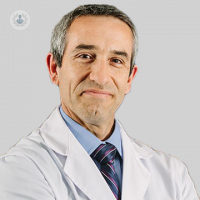In vitro fertilization, an effective technique to get pregnant
Written by:
What is IVF?
IVF is a technique that, broadly speaking, what is it in fertilize the eggs obtained from a stimulation of the ovaries, with the sperm of the couple, so that the embryo fertilized it back to let in the womb .
It has several phases. In the first we have to do is a stimulation of the ovaries, which submit the patient to a medical treatment in which we apply a series of drugs to get into that cycle of treatment, rather than only produces an egg, a higher number occurs.
Usually we try average is around six or eight. During that treatment time, every two or three days, we quote the patient using ultrasound be checking how it is carrying out such stimulation, and once we see that the ovaries are ready to ovulate, then we go to OR.
Although no type of surgery, and sedation to avoid that no type of pain through ultrasound and by puncturing through the bottom of the vagina, get the eggs. That same day, the patient about a couple of hours you can go home, we get male semen sample for, in the laboratory, collecting eggs and sperm.
Two or three days later the fertilized embryo is one that would leave within the uterus. Usually we transfer one or at most two embryos to get the best odds of pregnancy and reduced risk of multiple pregnancy. And if there were a greater number of good quality embryos, the remaining embryos may be frozen to use in subsequent cycles.
What types of previous studies carried out?
When a couple comes because he is having trouble getting pregnant, they are often carried out a series of tests to assess where the problem or problems that cause this change is, that difficulty getting pregnant.
From the female point of view it is usually carried first ultrasound to see if there is a type of anomaly at the level of the uterus or ovaries to justify the problem, and even to assess ovarian reserve, ie, the production capacity eggs in sufficient quantity and quality.
A series of blood tests ranging from a general analysis was also associated, to see the overall health of women, and hormonal studies to assess that there is any abnormality in the ovarian cycle. And in many cases, but not always, accompanied often necessary tests to evaluate the functionality of the tubes.
With this, in most cases, it is sufficient, although it is true that in some selected cases could be made more advanced studies.
In the case of the male is essential to carry out a semen analysis in which we can see the number, motility, sperm morphology, but where we always associate with the so-called test REM, or test training, in which we know exactly how many no sperm fertilizing capacity.
With this evidence in the vast majority of couples we find what factors affect getting pregnant, and thus propose the most appropriate treatment in each case.
What recommendations should follow the patient once made?
The patient can make a completely normal life once the IVF, except the first 20 minutes of rest after embryo transfer, the day the patient can make an absolutely normal life continuing with his treatment he prescribed medical.
What level of efficacy have?
Today pregnancy rates mean that we have a cycle of IVF is 45%, although it is true that you can depend on certain factors, such as the age of the patient, who can modify this mean success.




